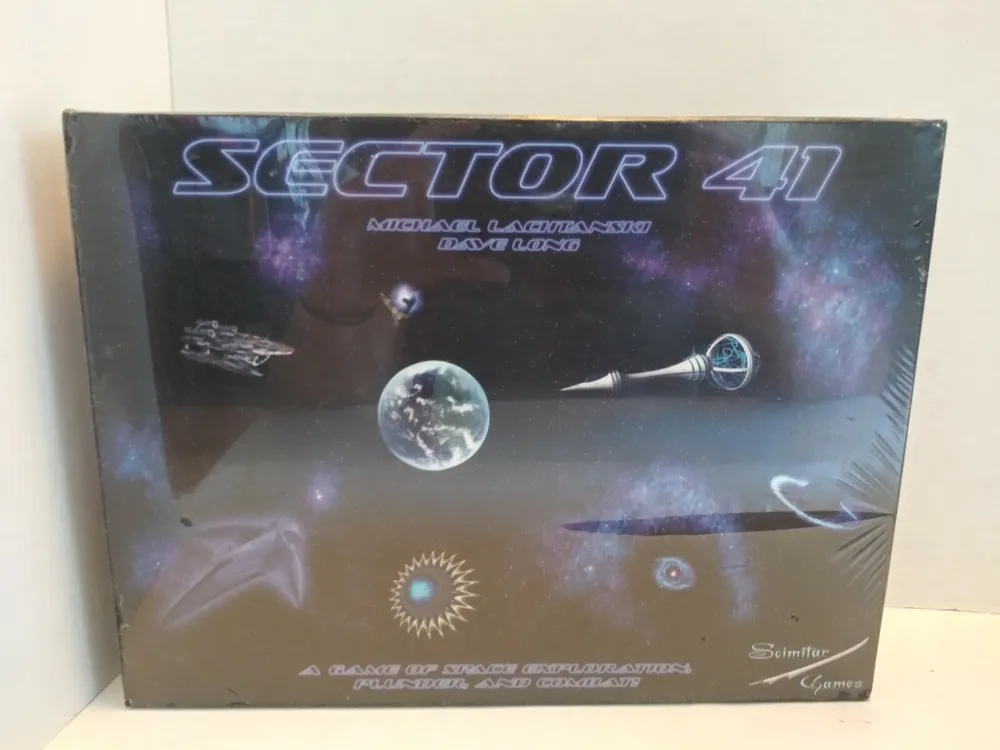Sector 41 (2009)
Sector 41
Sector 41 was developed from a compilation of game concepts developed by David Long and Michael Lachtanski, the earliest of which go back to the mid-1990s. The game was published by Scimitar Games and released in late fall of 2008.
Game Components of Sector 41
How To Setup Sector 41
To set up Sector 41, players randomly place 81 space tiles in a 9×9 square configuration. Each player selects their mother ship from one of four races: Fangarr, Mradok, Ryldarian, or Vailyn, and places it along with their three explorer ships on the center tile of their respective board edge. The Guardian is placed on the center tile of the board. In a two-player game, mother ships must be placed on opposite edges of the game board.
Gameplay Mechanics and Game Objective
– Turn-based strategy
– Exploration and resource management
– Tile manipulation and space folding
– Medium chance element
– Players aim to collect more Glynium points than their opponents by deploying explorer ships to discover, mine, and tow Glynium deposits back to their mother ship.
– The game ends when one player has an unbeatable lead in Glynium points.
Player Experience
Playing Sector 41 involves a mix of strategic planning and tactical execution. Players must navigate the unknown terrain of the 9×9 grid, using their explorer ships to uncover Glynium deposits and avoid or counter their opponents’ moves. The game’s “folding space” mechanic allows players to manipulate the board layout, adding a layer of complexity and strategy. However, the game’s learning curve can be steep due to the numerous types of tiles and their varied effects.
Pros
Cons
Personal Thoughts on Sector 41
Sector 41 is a game that will appeal to fans of space-themed strategy and resource management games. Despite its flaws, it offers a unique and challenging experience that rewards strategic thinking and adaptability. However, it may not be the best fit for casual gamers due to its complex rules and steep learning curve. For those who enjoy deep strategy and are willing to invest time in learning the game, Sector 41 can provide a rich and engaging gaming experience.
We are supported by our audience. When you purchase through links on our site, we may earn an affiliate commission, at no extra cost for you. Learn more.

